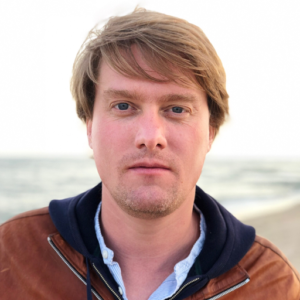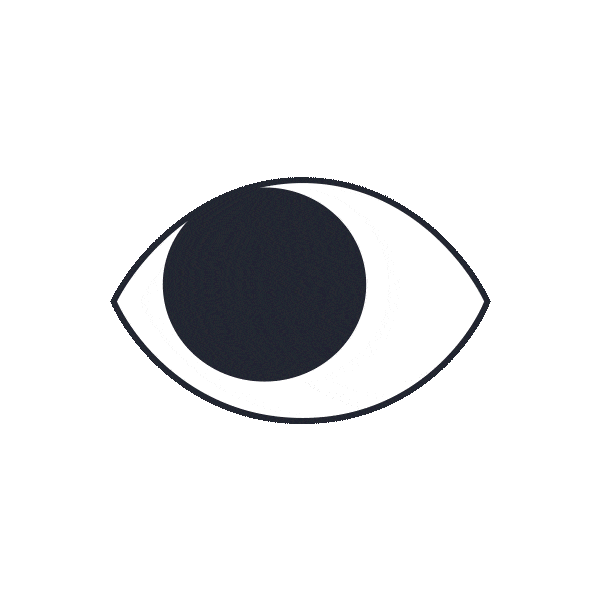An emblematic figure of humanist photography, Willy Ronis (1910-2009) defined this French school as “the gaze of the photographer who loves the human being.” Influenced by music and painting, he composed his images with the precision of an artist, capturing everyday life with a rare sensitivity and undisguised joy. He saw photography as a way to sublimate life, stating: “Sometimes, it is possible to steal the sublime moment and derive immense satisfaction from it.”
From Paris to Provence, via London and Venice, his gaze captured social struggles, the hope for a better world after the Second World War, and the flashes of life found randomly on the streets. This exhibition at the Galerie Rouge explores the diversity of his photographic oeuvre through iconic and lesser-known images that renew our perspective on his work.
Willy Ronis claimed this taste for diversity of subjects as a form of freedom: “I prefer to try a little bit of everything, even if it means focusing my efforts on what I enjoy doing and refusing what interests me less. Being free? Yes, but it’s not so much a question of freedom as a taste for diverse things.”
The photographic prints exhibited in “Willy Ronis, The Whirlwind of Life” come from the donation of Tina Vazquez, a person who was, throughout his life, a helper, a friend, a full-fledged member of his family. Thus, this exhibition also highlights the bonds of friendship that united the photographer with Ms. Vazquez. Above all, each image reveals a very special moment, a host of touching stories that Willy Ronis took care to tell before his passing in 2009, and which we are pleased to publish today.

“That day, I was getting ready to take the metro at the Tuileries to go home. It was late morning, on the Place Vendôme. Suddenly, I don’t know why, I lowered my head and noticed a puddle of water. I leaned down again and, looking at it very carefully, I saw that a treasure was hidden in this puddle, the Vendôme column was reflected in it. Of course, I immediately wanted to take a photo; it was a small miracle, this reflection. And immediately, a young woman stepped over this puddle. Damn, I wasn’t ready. I missed it, even though I would have so much wanted to capture this gesture, this whole thing, with the puddle, the leg, and the reflection of the column. But when I raised my head, I realized that several women were passing by and all going in the same direction. It was the workshops of the Place Vendôme who were throwing away their little sewing projects for lunch, they were probably going to meet up and relax in a bistro on the Rue Saint-Honoré. I looked at my watch, yes, it was noon, that was it. So, I waited. Three women, one after the other, followed the same path and stepped over the puddle. I took three photos. They didn’t notice me since it was the puddle I was aiming for. I could have, at a pinch, passed for a maniac or someone very strange, but, at least, I was able to achieve the effect I wanted. This photo is the most beautiful of the three. It is strange, sensual, with the beautiful design of the pump and the particular atmosphere of that day, when, I remember, it had not stopped raining.”

“That day, I was standing on a chair. I had gone to Joinville for a report on the guinguettes that Le Figaro had asked me to do, which at the time published a beautiful album on coated paper every quarter, with texts by artists, writers, and poets. It was in 1947, a Sunday afternoon. I particularly liked the atmosphere of these guinguettes, I went there regularly. Chez Maxe, that was the name of this one, curiously written with an “e,” and as soon as I entered, I saw a group of dancers toward the back that I wanted to photograph. Immediately. But I had to find a vantage point; I couldn’t go directly onto the dance floor because the photo would have been taken too close; I had to find a place that would allow me to overlook the entire dance. It was this general movement of the room and the dance that attracted me. And that I wanted to capture. So, I climbed onto a chair, just behind this couple who are there, in front, from behind. This will be my first shot, I thought. But once on the chair, my attention was drawn to a boy who was making two girls dance, very freely, very elegantly, on the right. This is my subject, I said to myself. I feel it right away when I find my subject. So, I signaled to the dancer to come closer. He had also noticed me, he understood me immediately and, while dancing with the two girls, he came towards me: that’s when I took my photo. He was dancing like a god. And besides, to make two girls dance like that, he must have had real talent. But when the music stopped and he resumed his place, I realized that he had a club foot. I was amazed. It was completely invisible when he was dancing. The moment I choose to take a photo is very difficult to define. It’s very complex. Sometimes, things are offered to me, with grace. That’s what I call the right moment. I know that if I wait, it will be lost, gone. I like this precision of the moment. Other times, I help fate. For example, here, I know that the first couple didn’t realize anything, but to get this precise photo, I really called them, my dancers. The story doesn’t end there. Three years ago, I received a letter from the dancer on the right. She told me that she saw this photo from time to time in the press and that she wanted to tell me how touched she was by everything it represented. Her youth, the atmosphere of these open-air dance halls, and of course the young girl dancing on the left who was a childhood friend: since kindergarten, she specified. But the boy, no, they had never seen him again. They had only danced with him that one time.”
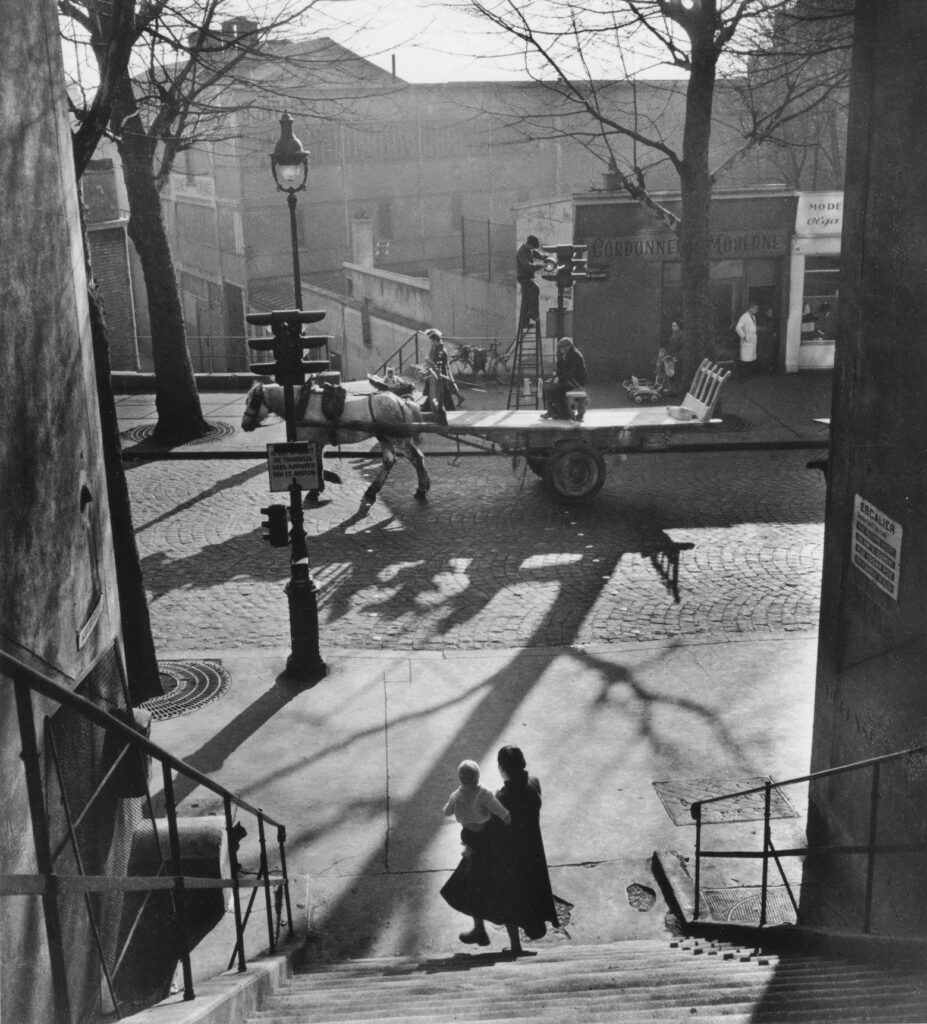
“Winter afternoon. I have rarely included so many elements in a single photograph. There is the mother carrying her child, the pivot of the construction. There is the cart pulled by its horse, which was already uncommon in the streets of Paris at that time; the worker repairing the traffic lights; behind him a couple pushing a baby carriage, and in front of him a mother doing the same. To the right, the shoemaker and his interlocutor (perhaps a pharmacist) are staring at the same point that we will forever ignore. Beyond, there is rue Lauzin and its workshops, today replaced by buildings that are not unpleasant to look at (allée Louise-Labé, etc.). I took new photographs there by placing myself in the same place, but not in the same season. Not to admit that it is less good, I would say that it is something else. Print of average difficulty. Very slight cropping on both sides.”
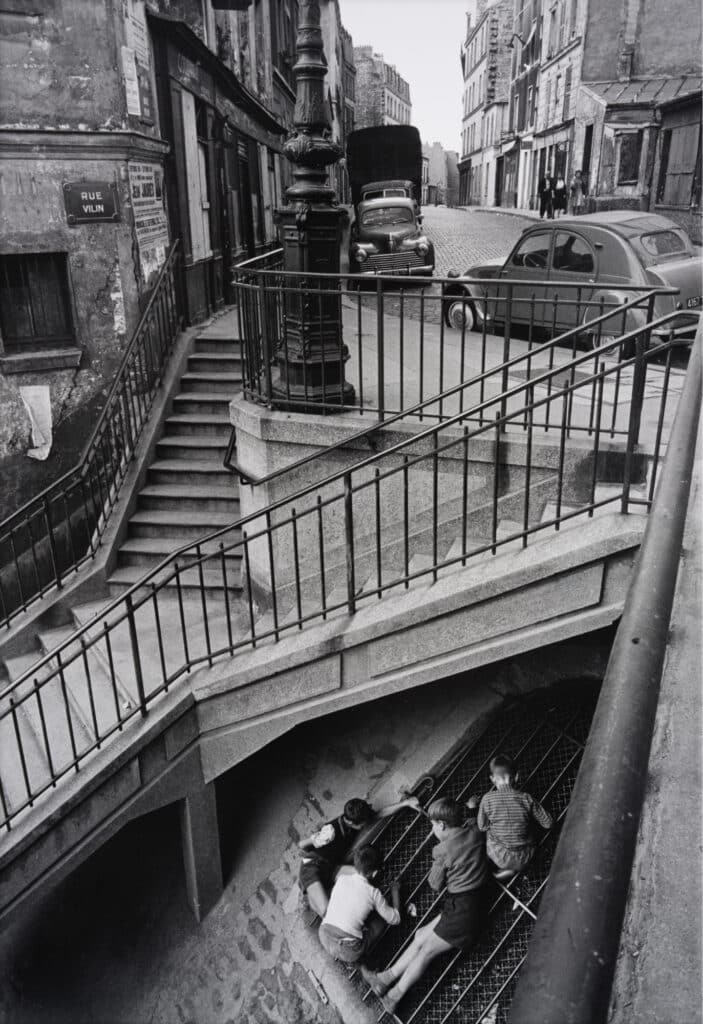
“The work on the new housing projects for Marie-Claire having seriously tired me of concrete, I interrupted my labor with more traditional interludes. This is how I found myself, on September 26, 1959, in the neighborhoods of Belleville and Ménilmontant where the rage of the rebuilders was beginning to be exerted, unfortunately more often for the worse than for the better. 28 mm lens, full frame.”

“Reporting on the Soho district of London, for France Soir , in Gaston Berlemont’s French pub, one late December morning superbly lit by the low rays of the winter sun. A quick look around: chic, a staircase! An ideal belvedere: I’m not bothering anyone and I can see everything. Two or three shots, very quickly, to make sure; you never know, some people have irascible beer. And then I wait for the young waitress to come and position herself in a ray of sunlight. Marvelous! Everything falls into its exact place, better than if I had been the organizer. A print that is difficult to balance, because of very strong shadow-sun contrasts. 28 mm, probably at F: 8 and 1/25 of a second. The film was Ilford HPS, later replaced by HP5.”

“Venice. Fondamente Nuove, northern quays of the city of the Doges. The sun, already a little low, harshly silhouetted the backlighting. I swapped the 28mm for its extreme opposite, the 135: this would best frame the image I was hoping for, the outline of which already existed in my head. Hope fulfilled: a little girl steps onto the footbridge. A single click. One regret: I would have preferred the rower’s boat to be a little detached from the wooden posts, with which its mass blends in. And then, I framed it a little askew, in my haste. It will have to be straightened when printing to restore the horizontality of the upper plane. Also, be careful to balance the contrasts and not to bring up gray on the surface of the water.”

“That day, I had just finished a report on the Halles Baltard, the great covered markets of Paris. The neighborhood interested me a lot and I was still walking around, like that, at my whim. It was midday and I had arrived at rue Rambuteau. I was struck by the grace of these two young girls who were simply selling fries and talking to a customer who, naturally, was joking with them. I took my photo, chic, nose in the air. There were a lot of people all around and as they were pretty and friendly, it excited the customers’ enthusiasm. It was in 1946, a year after the Liberation, Paris was experiencing a period of optimism and great enthusiasm, which is what this photo conveys for me. Their charm, their smile, their mischievousness, it is basically everything we love about that Paris, lively, alert, funny. I was lucky enough to live at that time.” I covered three-quarters of the century. My first photos date from 1926, and I worked until 2002. With a break during the war, when I was in the South. There, I didn’t take any photos, except for a few of Vincent, of course. And a series of portraits of Jacques Prévert, who had invited us to spend New Year’s Eve at his house in Tourettes-sur-Loup, on the night of 1941 to 1942.”
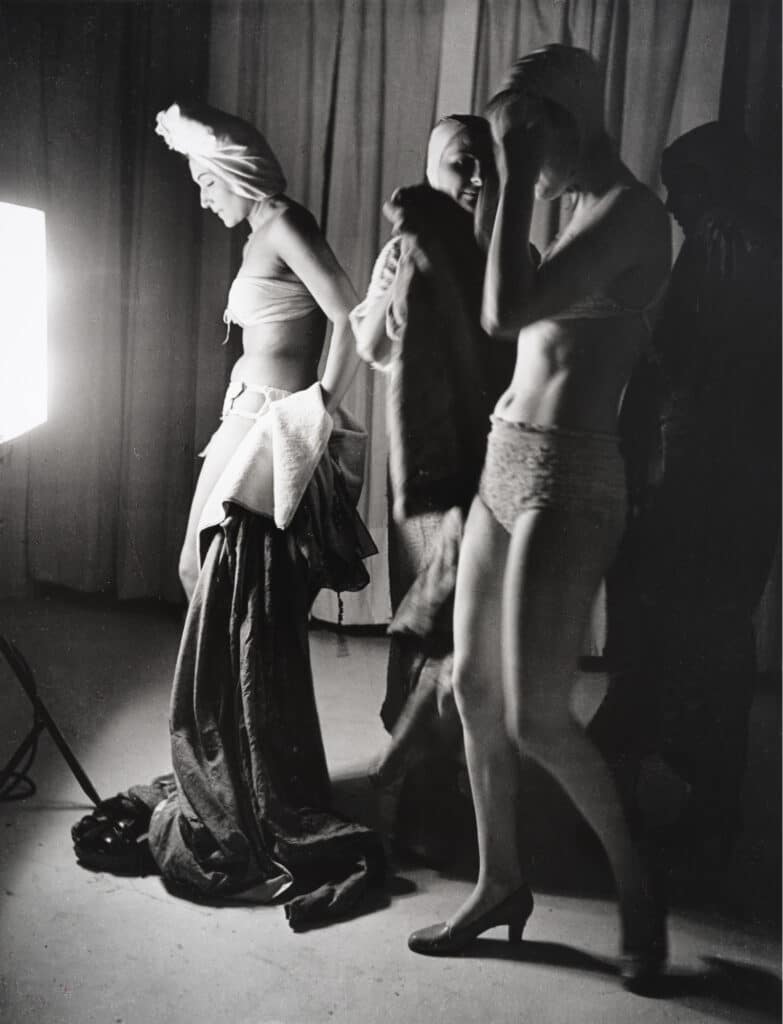
“That day, on the set of a second-rate film called The King of the Freeloaders , I was doing a report that I had been asked to do for a magazine. It was a comedy film, and all the scenes were shot in the studio: I loved following this work of rehearsals and then shooting, there were so many details to capture. It was break time. I remember that we were very cold in these rooms. It was 1945, everything was still poorly heated. I then surprised these girls who had just shot a scene and who were trying to warm themselves, despite everything, against the lighting. The bulbs were very strong, it was the only source of heat, and while waiting for filming to resume, they had positioned themselves in front of these light boxes. The scene was both everyday and mysterious, I couldn’t help but capture it. This light even seems a little disturbing, in what time are we exactly?”
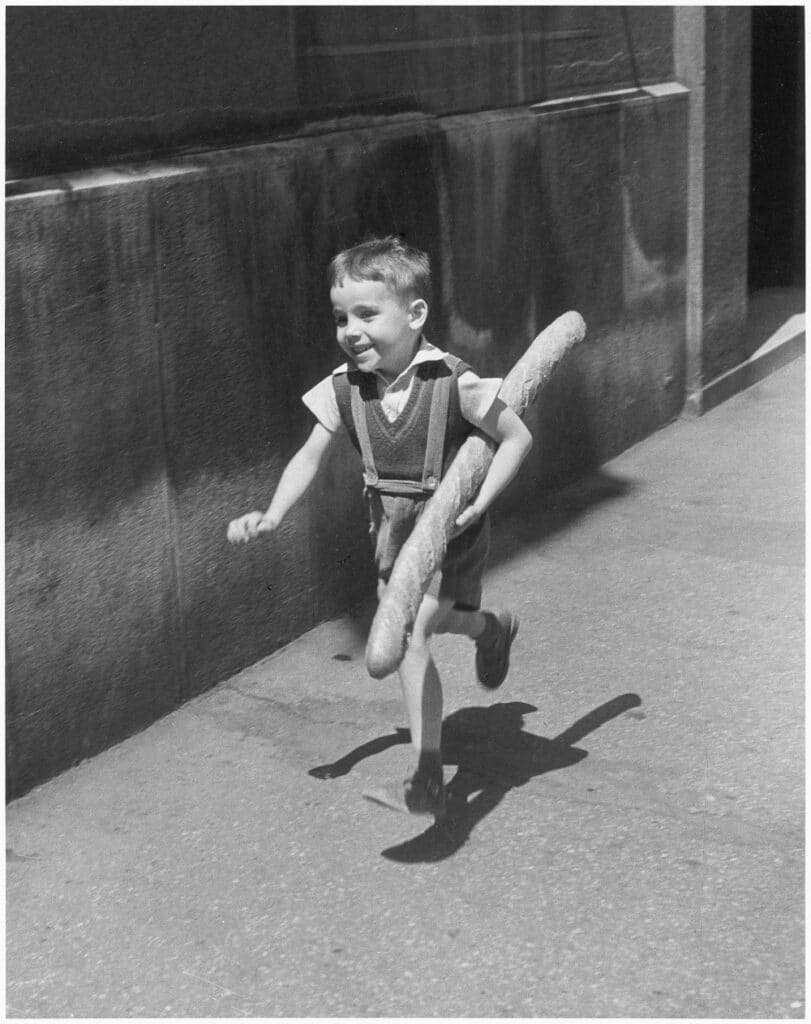
“That day, for this photo that has been reproduced so many times in the press and which, ultimately, could come to sign my self-portrait as a little Parisian, I had made a small obstacle to my usual practice. I mean that I did a minimum of staging. I had to illustrate a report called Revoir Paris and told the story of a Parisian who had gone to live for fifteen years in New York and returned to Paris, noting with amusement all the distinctive signs of what one sees in Paris. Among all these distinctive things, there was of course the great Parisian bread. So I had to find a particular way to photograph it, to put it in context, it would not have made sense to simply choose the setting of a bakery. It was noon, I went to my neighborhood to hang around near a bakery. In the queue, I saw this little boy, with his grandmother, waiting his turn. He was charming, with a cheeky little air. I asked his grandmother: “Please, Madam, would you allow me to photograph this little boy when he comes out with his bread? I would like to see him running with his bread under his arm.” “Yes, of course, if it amuses you, why not?” I stood a little further away and waited. He bought his bread and ran, so gracefully and lively. I made him run three times, for a few meters, to get the best photo. And this photo was a tremendous success; it was made into a poster and postcards. I knew that it was even seen abroad, in bistros and bakeries, in New York, and in a number of European capitals. I found this boy thanks to his mother-in-law who, one day, came forward and called me one morning: “You know, Mr. Ronis, I’ve known this photograph for a long time, and naturally my son-in-law knows it too, but if I’m calling you today, it’s because I saw it on the cover of a book you’ve just published.” Thanks to this woman, I was also able to find the name of the street where I had taken this photo: rue Péclet. I went back to see if I would find the door, if I would remember. The house hadn’t been renovated, it was exactly the same setting, and I had proof that it was there because in the complete photo, there was a gas manhole at the bottom of this wall, like a small cast iron box, which had remained in the same place. The manhole hadn’t moved all these years! But the little boy, he never came forward.”

“As I was preparing to leave the Centre Pompidou one evening, I was fascinated by the play of the sun, highlighting the runoff from a recent downpour on the plastic cylinder of an outdoor gallery. Two photographs without anyone, as if to warm up; a third with a couple I wasn’t sure about; a fourth, this one, which I felt might be the right one. 28-50 mm zoom. A difficult print, because you needed details in the sunny areas, and to give a glimpse of the pedestrians on the piazza of the Beaubourg plateau. Full frame.”
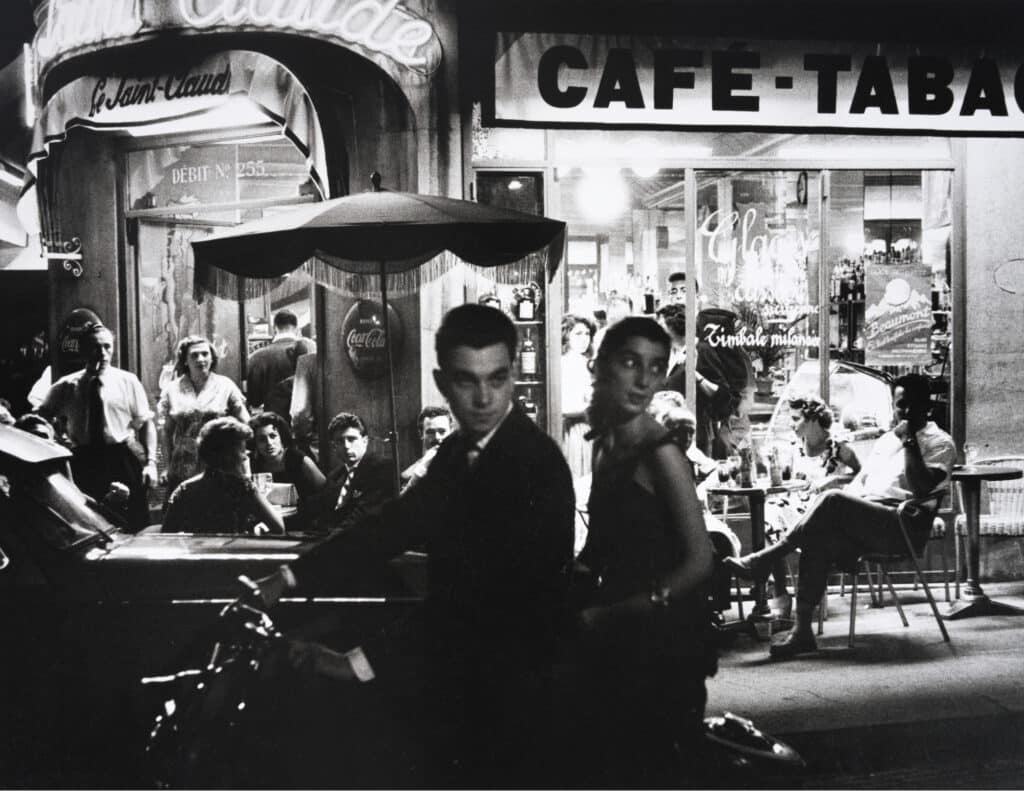
“It’s July 14, 1955, on Boulevard Saint-Germain, at the corner of the Odéon central reservation: one of those multiple scenes that are born, evolve very quickly, and disappear, like soap bubbles. Be present, position yourself where you need to be, avoid confusing shots, show that something is happening, no matter what: we’re not at the cinema and we don’t have to follow a common thread. You have to move around all the time to become aware of the uninterrupted succession of surprises. Modulate the shot carefully. Almost complete framing.”
The exhibition “Willy Ronis, The Whirlwind of Life” is presented at the Galerie Rouge , in Paris, until May 17, 2025.

